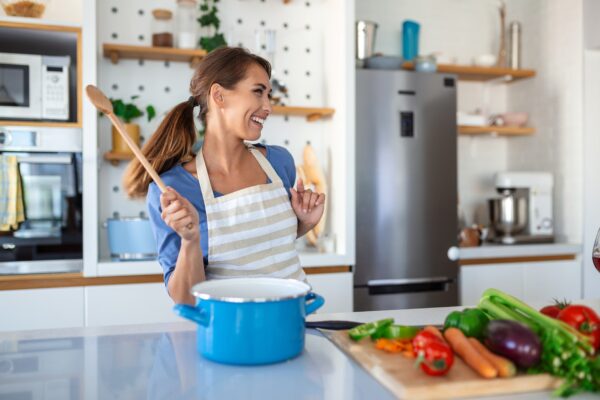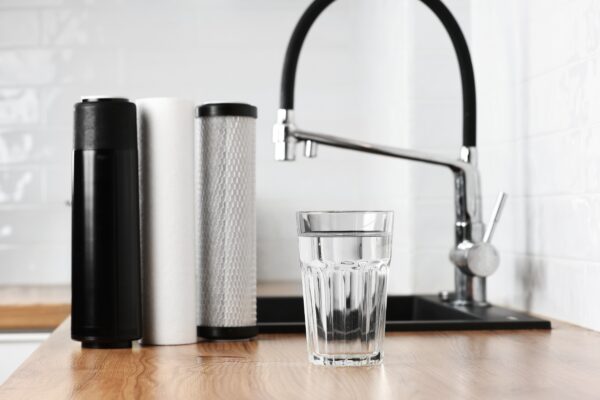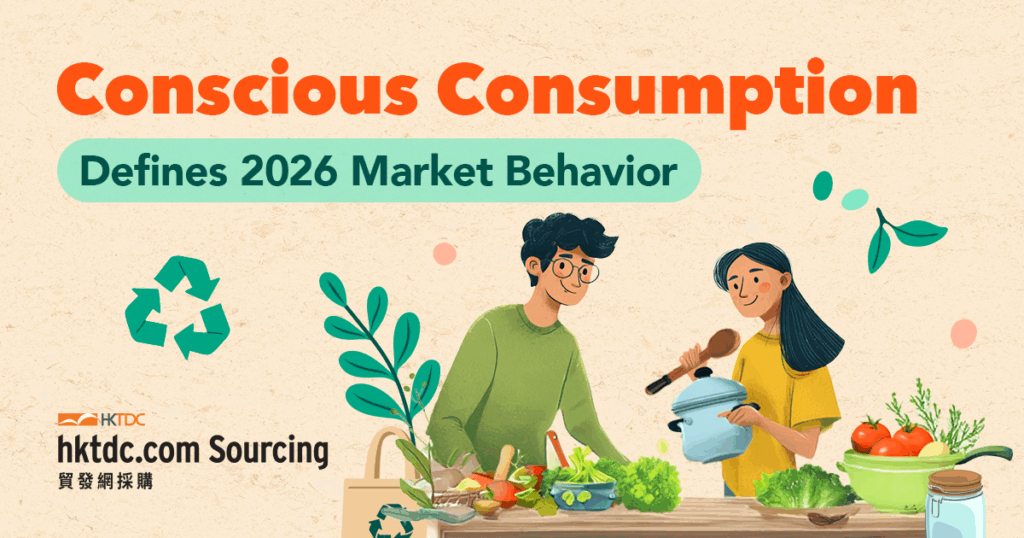As global markets move through a period of volatility and opportunity, one clear shift is emerging: buyers are prioritizing products and partners that offer lasting value, traceability, and real sustainability. This is not simply a reaction to inflation or supply constraints—it’s a structural change accelerating across consumer sectors worldwide, especially in home and lifestyle categories. By 2026, Millennials and Gen Z—recognized as the most value- and sustainability-driven generations—are setting new standards for transparency, responsible sourcing, and product longevity. Their influence is fueling a rebalancing of procurement, retail, and supplier strategies that extend well beyond branding, with measurable impact on the global sourcing and trading landscape.
Pandemic Shift: Home Becomes the Center
The Covid-19 pandemic reshaped routines at a global level, putting home, kitchen, and self-sufficiency at the heart of daily life. Prolonged time indoors, combined with supply chain disruption and inflation, led families to cook more, repair more, and invest in products that deliver lasting resourcefulness. One global effect: the kitchenware and houseware market is valued at $32.91 billion in 2025 and is projected to reach $45.74 billion by 2034, with CAGR of 3.9%.
Consumers’ priorities now revolve around batch cooking (preparing meals in advance, often for the week), scratch meals (cooked from basic ingredients), and zero-waste practices (reducing household and packaging waste through better planning and smart storage). The surge in demand for multi-purpose cookware, food storage containers, and durable small appliances reflects this deeper focus on efficiency, health, and sustainability.
Market Dynamics: Quality, Flexibility, and Value
This conscious consumption trend is reshaping kitchen and home sourcing worldwide. Asia-Pacific leads the global kitchenware market by revenue (over 40% share), with North America at about 28%—each underpinned by urbanization, eco-upgrading, and household tech adoption. As buyers maximize home value, demand for food storage is also on the rise: the global storage/organization market hit $170.9 billion in 2025 and is forecast to reach $265.3 billion by 2035 (CAGR 4.5%). Modular bins, glass containers, and airtight organizers have become mainstream, with meal prepping and waste avoidance now at the heart of kitchen routines.
Small kitchen appliances, such as air fryers, bread makers, and eco-efficient kettles, are accelerating category momentum—growing from $19.54 billion in 2025 to $27.19 billion by 2033, at 4.2% CAGR. Three-quarters of Gen Z and Millennial households in developed markets now own multipurpose gadgets to simplify scratch cooking and enable healthier eating.
Water filtration, on the other hand, stands as a fast-expanding, but regionally variable segment. Globally, water purification is growing at a 5–9% CAGR through 2028, with especially high adoption in Chinese Mainland, Singapore, Australia, and the Middle East.
Simply put, functional, traceable, and space-efficient sourcing is now the new norm—driven by a desire for self-reliant, modern living.

Why It Matters: Profitable, Resilient Sourcing
B2B buyers that anticipate these trends gain clear advantages. Modular, certified long-life products fetch up to 20% shelf premiums in global retail, and see return rates 30% lower than their disposable counterparts. Transparency and sustainability certifications have become “must-haves,” both for regulatory compliance and for winning premium segment customers.
Bundling as a Sales Strategy. Starter sets and curated bundles drive category growth, especially in North America and Europe, where combining cookware with storage containers, utensils, or small appliances has lifted average order values by 17–18% over single-product orders. For example, kitchenware and food storage sets sell fastest among new households, students, and families.
In Asia-Pacific, bundles tend to emphasize modular kitchen or meal-prep solutions, with water filtration often cross-promoted as an upgrade path, especially in health-focused or premium retail segments. The highest-performing combinations vary by country, but the principle—offering coordinated sets tailored to local self-sufficiency trends—consistently drives sales and customer engagement.
Four Key Categories for Modern Self-Sufficiency
Kitchenware & Cookware
The kitchenware and cookware sector is advancing rapidly, propelled by premiumization, innovation, and a renewed interest in home cooking. Globally, Asia-Pacific currently leads the market by size, fueled by urbanization and a rising middle class demanding affordable, multifaceted products. North America, meanwhile, is the leader for smart kitchen integration—buyers there increasingly seek products with embedded sensors and compatibility with kitchen apps. European and US buyers are prioritizing eco-friendly and certified-sustainable materials amid new regulatory demands. Multifunctional pans, modular cookware sets, and ergonomic designs appeal to Millennials and Gen Z across all regions, reflecting the consumer desire for lasting value, convenience, and smart tech adaptability. Regional nuances remain, but the overarching trend is toward functional, future-proof investments that blend style with substance.

Food Storage & Organization
Food storage and organization have become kitchen essentials, largely due to meal prepping, zero-waste commitment, and the proliferation of smaller, urban homes. The Asia-Pacific region is setting the pace in volume growth, thanks to strong demand for stackable, space-saving containers suited for compact apartments. North American and European buyers increasingly target products with food-safety certifications, modular compartmentalization, and leak-proof innovations. Globally, there’s a clear shift toward sustainable materials—such as glass and silicone—and to the integration of smart organization, like QR-coded lids for tracking freshness. The most engaged buyer segment includes young urban professionals and families who want streamlined solutions to reduce waste, maximize fridge space, and simplify batch cooking.
Small Kitchen Appliances
Small kitchen appliances have transitioned from basic support tools to drivers of kitchen digitalization and healthy living. Asia-Pacific and North America are growth engines— Asia-Pacific for high unit sales and North America for innovation in smart, connected appliances. Popular product features now include IoT compatibility, multi-use functions (such as cook/blend/sous-vide in one), and health-focused presets. Millennials and Gen Z customers are the main buyers for air fryers and smart blenders that sync with nutrition apps. Ease of cleaning, energy efficiency, and compact, multipurpose design are universal requirements among these younger, urban-based shoppers. For B2B buyers, appliance longevity and compliance with regional energy standards remain sourcing essentials.
Water Filtration & Purification
The water filtration and purification segment is seeing robust global expansion, especially in regions where urban populations are growing and health consciousness is rising. Mainland China, Singapore, and Australia report double-digit year-on-year sales gains for both pitcher and under-sink units, with urban Millennials and young families as the leading adopters. In Western markets, demand centers on easy-install filters and rigorous safety certifications for contaminants. In Hong Kong and similar cities, water filters attract mainly premium and wellness-oriented buyers. Technology matters: smart filters with app-based reminders or usage tracking are gaining ground in urban segments. Sourcing emphasis is on after-sales filter replenishment and product transparency (e.g., lab-tested performance).

2026 and Beyond: Market Insights for Buyers
Strategic buyers increasingly recognize that kitchenware, storage, appliances, and water filtration are foundational categories for the modern, self-sufficient home. According to 2025 research from Mintel and NielsenIQ, over 60% of global trade buyers plan to prioritize eco-friendly and modular product lines in their 2026 inventories, reflecting sustained demand for adaptable, sustainable solutions. Regulatory pressure on sustainability, documentation, and supply chain transparency is mounting across all regions, making close supplier relationships and digital inventory management essential for compliance and competitive agility.
Recent trend reports show fast adoption of smart technology and functional design, particularly in North America and Asia-Pacific, where demand for kitchens that blend health, automation, and everyday usability is shaping sourcing decisions for residential and hospitality buyers alike. In this environment, the most successful procurement teams are those that curate locally relevant, cross-promotable categories—spotlighting functional, health-oriented, and sustainable benefits tailored for each market.
Forward-thinking buyers can expect continued growth in categories that address smart homes, energy efficiency, and well-organized living spaces, making it more important than ever to stay proactive, communicate with partners, and keep product assortments aligned with both regulatory standards and emerging lifestyle trends.
Sourcing for Lasting Value
The next phase of growth in home and kitchen markets demands a sharper focus on innovation, utility, and alignment with evolving lifestyles. As kitchens increasingly serve as multifunctional, tech-enhanced spaces that foster health and efficiency, buyers who anticipate demand for modular designs, integrated storage, and practical water solutions will be best equipped to capture new opportunities. Success will favor those who stay close to shifting buyer preferences—whether that means adapting to smaller urban footprints, regional compliance requirements, or surging interest in connected, hassle-free products. By broadening partnerships and staying agile, sourcing leaders can set new benchmarks for adaptability and value, positioning their portfolios for sustained impact in a market defined by conscious decision-making and self-sufficient living.
Bonus for Suppliers
Conscious consumption is reshaping demand across multiple product categories, with rising buyer interest in transparency, sustainability, and durable design. If your product portfolio reflects these values, join hktdc.com Sourcing now to showcase your offerings and build strong partnerships that drive growth in this dynamic economy.
Global Market Data, Regional Trends, and B2B Buyer Insights
Mintel, NielsenIQ, Statista, McKinsey, Euromonitor, Grand View Research, Mordor Intelligence, Accio, HKTDC International Buyer Sourcing Behaviour Survey 2025, MarketWatch
Sustainability Standards, Responsible Sourcing, and Regulatory Compliance
IMARC, FSC International, Global Organic Textile Standard (GOTS), BSR, Anthesis Group, PwC
Home & Lifestyle Product Innovation, Smart Technology, and Consumer Preferences
GWI, Gartner, Deloitte, Concord, Forrester, LinkedIn B2B Institute, Flow.ninja, Bluemeteor, DigitalStoryteller.io, LikeMind Media
Supplier Performance, Service Quality, and Digital Sourcing
Shopify, OrdersInSeconds, Martal Group, HKTDC Sourcing platform documentation
Market Communication, Trust, and Brand Positioning
TrustMary, Salesforce, The Drum, Ironpaper, SEMrush, Ahrefs, GeniusDrive, HKTDC NewsBites
Keyword & Category Trend Analytics
Google Trends, Google Ads Keyword Planner, AgencyJet
Platform & Sourcing Guidance
hktdc.com Sourcing, HKTDC Support Centre, HKTDC NewsBites







